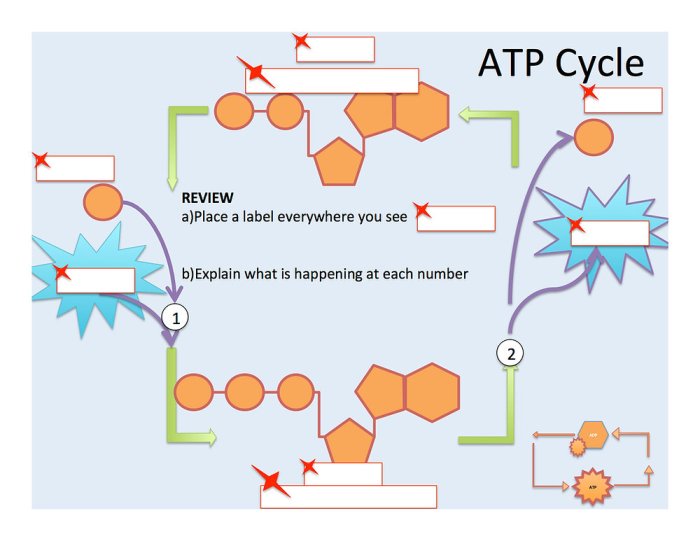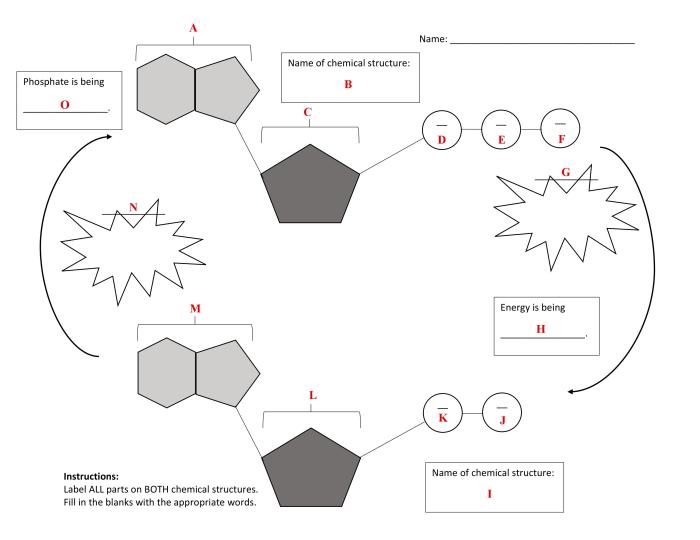The ATP Activity Worksheet Answer Key is an indispensable resource for students and educators seeking a comprehensive understanding of cellular energy metabolism. This key provides detailed explanations, real-world examples, and engaging illustrations to clarify the core concepts of ATP structure, function, hydrolysis, and cellular respiration.
The user-friendly layout and organization of the answer key make it easy to navigate and find the information you need quickly and efficiently. The key covers a wide range of topics, from the basics of ATP production to the implications of ATP activity in various fields.
1. Introduction to ATP Activity Worksheet Answer Key
ATP activity worksheets are designed to provide students with a comprehensive understanding of cellular energy metabolism, specifically focusing on the role of adenosine triphosphate (ATP) in energy production and utilization within cells. The answer key serves as a valuable tool for educators and students alike, offering detailed explanations and insights into the key concepts covered in the worksheet.
The answer key covers a wide range of topics related to ATP activity, including its structure and function, the process of ATP hydrolysis and energy release, and the role of ATP in cellular respiration. By providing clear and concise explanations, the answer key helps users grasp the fundamental principles of energy metabolism at the cellular level.
2. Structure and Organization of the Answer Key

The ATP activity worksheet answer key is organized into several sections and subsections, each addressing a specific aspect of ATP activity. The layout is designed to be user-friendly and easy to navigate, allowing users to quickly find the information they need.
The answer key typically includes sections on:
- ATP structure and function
- ATP hydrolysis and energy release
- Cellular respiration and ATP production
Each section is further divided into subsections that provide detailed explanations of the key concepts and processes involved.
3. Key Concepts and Explanations
The answer key provides clear and concise explanations of the core concepts related to ATP activity. These concepts include:
- ATP structure and function:The answer key explains the chemical structure of ATP and its role as the primary energy currency of cells.
- ATP hydrolysis and energy release:The answer key describes the process of ATP hydrolysis, in which the terminal phosphate bond is broken, releasing energy that can be used to power cellular processes.
- Cellular respiration and ATP production:The answer key Artikels the process of cellular respiration, including glycolysis, the Krebs cycle, and the electron transport chain, and explains how ATP is produced during these processes.
4. Examples and Illustrations
The answer key often includes real-world examples or case studies to illustrate the practical applications of ATP activity concepts. These examples help users connect the theoretical concepts to real-world scenarios.
Additionally, tables or diagrams may be used to illustrate key processes, such as the electron transport chain or glycolysis. These visual aids enhance understanding and make the content more accessible to users.
5. Applications and Implications

The answer key also discusses the broader implications of ATP activity in cellular processes and overall organismal function. It explains how understanding ATP activity is essential for fields such as medicine, biotechnology, and environmental science.
For instance, in medicine, understanding ATP activity is crucial for diagnosing and treating metabolic disorders. In biotechnology, it is essential for developing new drugs and therapies that target cellular energy metabolism. And in environmental science, understanding ATP activity is important for assessing the impact of environmental stressors on cellular function.
FAQs
What is ATP?
ATP (adenosine triphosphate) is the primary energy currency of cells. It provides the energy needed for various cellular processes, including muscle contraction, nerve impulse transmission, and chemical synthesis.
What is the role of ATP in cellular respiration?
ATP is produced during cellular respiration, a process that converts the energy stored in glucose into a usable form for cells. ATP is the molecule that transfers energy from glucose to other cellular processes.
How is ATP used in the body?
ATP is used to power a wide range of cellular processes, including muscle contraction, nerve impulse transmission, chemical synthesis, and active transport of molecules across cell membranes.
